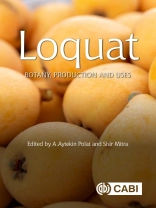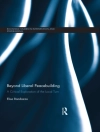Loquat (Eriobotrya japonica Lindl.) is a subtropical evergreen fruit tree indigenous to China. Records show it has been cultivated in China for over 2000 years. From this beginning, loquat has spread to more than 30 countries around the world.
Grown in various regions of Asia, the Mediterranean and across the Americas, loquats suit both temperate and subtropical areas, sharing the same environmental conditions as citrus. Loquat is an increasingly commercial crop in some Asian and European countries with a good amount of international trade.
Recent research has focused on improving crop yields and quality. Over 100 different varieties have been developed to meet both growers’ and consumers’ demands. These developments have contributed to a better understanding of the crop environment, plant growth and physiology of tree and fruit development with implications for both breeding and cultivation.
This book is to be the first to provide a comprehensive coverage of the history, physiology, culture and marketing of loquat throughout the world.
关于作者
A. Aytekin POLAT is Professor of Horticulture, Mustafa Kemal University, Antakya, Hatay, Turkey. He obtained his MSc. and Ph. Degrees at Çukurova University, Adana, Turkey. Being located in the center of the Turkey’s main loquat production region, Mediterranean, he started working on loquats with his Ph D. thesis. Then, he moved to Hatay Mustafa Kemal University, Agriculture Faculty, Horticulture Department, Hatay, Turkey, as founder of the Department.
He has published 140 research papers and articles of which almost 45 are on loquat propagation and production technology.
He was Convener of the 3rd International Symposium on loquat held at Hatay, Turkey in 2010. He also edited the Acta Horticulturae volume (No.887) out of this symposium, together with Jules Janick.
Currently, he leads training projects on high density orchard with dwarf rootstocks in loquats and works for the development of dwarf rootstocks farming systems.












